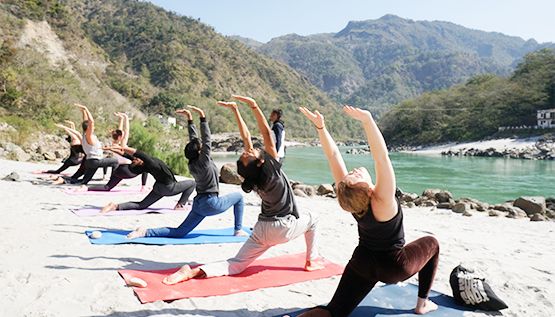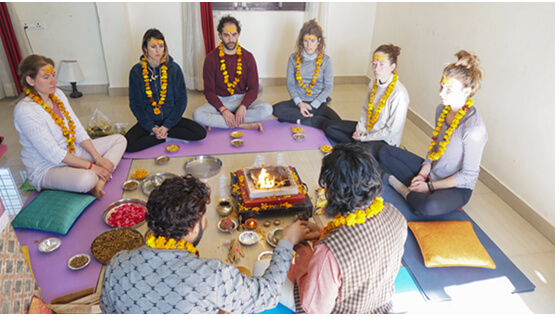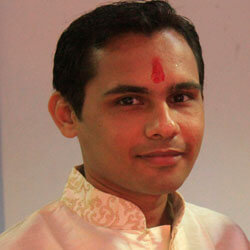500-hour Yoga TTC helps you to rearrange and redesign your subconscious mind to achieve anything and everything in your life.
– Siddhant Ji500-Hour Yoga Teacher Training in Rishikesh India
Siddhant School of Yoga presents a 500-hour Yoga Teacher Training Course in Rishikesh approved by Yoga Alliance USA. It is specially designed for a longer duration because regular practice of yoga for a longer period creates a habit to practice yoga daily in you. And this habit develops a lot of good qualities in you which help you to grow in your practical and professional and spiritual life.
It is also possible that you can do 200 and 300 hours of Yoga Teacher Training Courses separately to get your 500 hours of Yoga TTC certification. But we suggest you do a 500 hours Yoga Teacher Training Course at once. It will be very effective and useful for your self-growth as it creates some good yoga habits in you by following the right understanding and intense practice of yoga. It also helps you to present yourself as a good yoga teacher.
Yoga is the best way to live a healthy, focused, and balanced life. To get good results in yoga you need to practice yoga sincerity, punctuality, and regularity. Out of these three qualities, regularity is very important. Regular practice of yoga creates a yoga habit in you. Once you create a habit to practice yoga daily then your subconscious mind guides you as a true friend for practicing yoga daily.
Siddhant School of Yoga presents 500-hour Yoga Teacher Training in Rishikesh for 56 days including Hatha yoga, Ashtanga Vinyasa, Pranayama, Bandha, Mudra, Yogic Purification, Yoga Philosophy, Yoga Anatomy and Physiology, Meditation, Mantra Chanting, Yoga Nidra, Basic Ayurveda, Basic Naturopathy, and some more subjects related to your practical life and growth. Right and intense practice of all these subjects is helping you to redesign your subconscious mind by creating some good habits.
Yoga is something about redesigning your subconscious mind as the subconscious mind controls 95% of your conscious life.
500-hour Yoga TTC helps you to rearrange and redesign your subconscious mind to achieve anything and everything in your life. The well-trained subconscious mind is like an obedient and faithful friend.
So come and join Siddhant School of Yoga in Rishikesh India and go through a 500-hour Yoga Teacher Training Course to train your subconscious mind for living a successful life in all aspects.
Why Siddhant School of Yoga?
500 Yoga Teacher Training Course with Siddhant School of Yoga in Rishikesh is the best platform for basic to advanced yoga practitioners. This yoga course is meant for passionate yoga practitioners, who want a positive change in their life.
Siddhant School of Yoga is known for its intense level of practice. We present yoga as the art of redesigning your subconscious mind. We present yoga as the complete solution to your physical, mental, emotional, and spiritual problems.
During this course, we provide you some unique techniques to enhance your energy level, balance your mind, and develop your right understanding. We are working at a very deep level of human personality and consciousness to create a good yoga teacher.
We help and support you by giving a schedule for your regular yoga practice after completing your yoga course.
Dear friend, if you are looking for a deep and right yoga education then come and join our 500-hour Yoga Teacher Training residential yoga program at Siddhant School of Yoga in Rishikesh India and experience your growth.

Prana is the base of life and Pranayama practice can solve almost all the problems of your life. Pranayama is the most important aspect of 500-hour yoga TTC. Pranayama is the base of meditation, asana, and different healing methods. Pranayama practice in the right way helps you go deep into meditation and also helps you to practice your asana in its pure form.
Let you know that only breathing exercises are not pranayama. Of course, right and rhythmic breathing exercises are part of pranayama.
Siddhant School of yoga presents the right practice of Pranayama in a traditional way and step by step where you can experience your growth day by day.
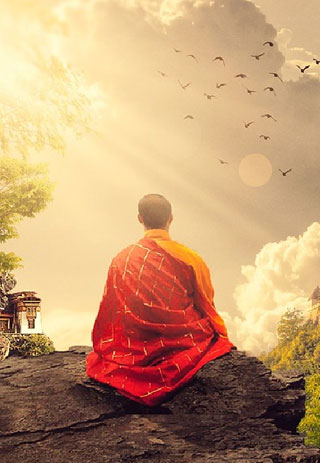
Gratitude is the higher quality you should have but you cannot practice gratitude, it comes automatically by practicing thankfulness and gratefulness.
During your 500-hour yoga TTC, Siddhant School of Yoga helps you to practice thankfulness and gratefulness step by step and day by day very practically so that you can experience gratitude in your life. Gratitude is one of the best options that give you peace, happiness, satisfaction, success, and many more. So come and join the 500-hour yoga TTC with Siddhant School to develop your gratitude attitude.

Meditation is the state of an empty mind. You can experience it but you cannot practice meditation. A master or an experienced teacher can help you to experience meditation.
During 500- hour yoga TTC with Siddhant School of Yoga presents different types of traditional breathing, mental, and physical techniques by which you can experience meditation in its pure form. Here in our yoga school, we help you to understand all about meditation because understanding of meditation is very important to go through the right practice to experience meditation.
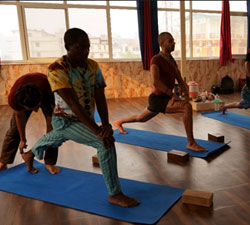
The right framework is very necessary for 500 hours of yoga TTC. Random practice without any framework will not lead you anywhere else. Siddhant School of Yoga as a professional Yoga Teacher Training School helps you to practice and grow with the right framework.

Siddhant School of yoga covers almost 15 subjects during a 500 hours Teacher Training Course. We are the first Yoga School in Rishikesh India giving the maximum subjects with in-depth knowledge for your right practice and growth.
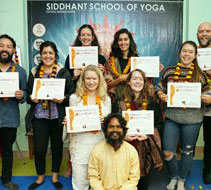
Siddhant School of Yoga gives importance to the best yoga education. So we take a small group of 10-15 students in our 500-hours Yoga TTC to give you personal attention for your proper growth.

Measuring growth is very challenging in Yoga but it is necessary for your growth. Siddhant School of Yoga is the first Yoga School in Rishikesh, India to give you many symptoms and parameters to measure your growth during your 500-hour Yoga TTC. You can find your physical, mental, and intellectual growth during your yoga course.
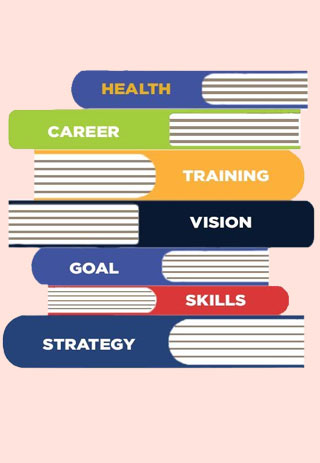
You are here with Siddhant School of Yoga and going through 500-hour Yoga TTC to become a professional yoga teacher. And we are committed to preparing and presenting you as a professional yoga teacher.
Siddhant School of Yoga as one of the best Yoga Teacher Training Schools in Rishikesh helps you to develop some good qualities you should have as a professional yoga teacher.
During the 500-hour Yoga TTC, We can help you to develop a committed attitude, the right knowledge about the subject, goodwill for students, and some other qualities in you to become a professional yoga teacher. The way we are conducting our yoga course to prepare you as a normal practitioner to become a professional yoga instructor is very appreciable. We are very confident because of our results.
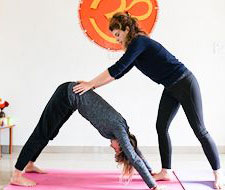
Personal attention is very necessary for a practitioner to become a professional yoga teacher. While pursuing a 500-hour Yoga Teacher Training Course we give personal attention to you as we are conducting the course with smaller groups.

Siddhant School of Yoga gives you daily 6 classes by covering almost 15 subjects during a 500 hours Teacher Training Course with in-depth knowledge of every subject. The right and deep knowledge of the different yogic subjects motivates you to practice them in the right way. Later you can choose your favorite subject for mastery.

Siddhant School of Yoga in Rishikesh India gives you both traditional Hatha Yoga and Ashtanga Vinyasa during 500-hour Yoga Teacher Training Courses. Hatha Yoga gives you stability in your body and Ashtanga Vinyasa gives you Stamina, Strength in your body.
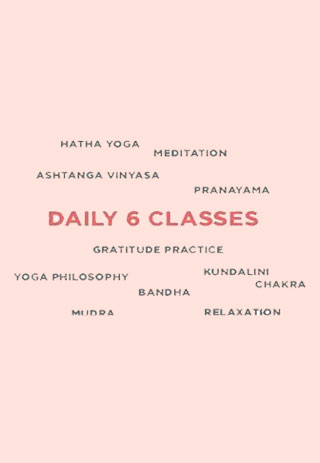
Siddhant School of Yoga presents Pranayama, Hatha Yoga, Meditation, Yoga Philosophy, and Ashtanga Vinyasa are the 5 daily classes and the other-one class is all about different yogic subjects that will cover a daily basis accordingly during your 500-hour Yoga TTC.
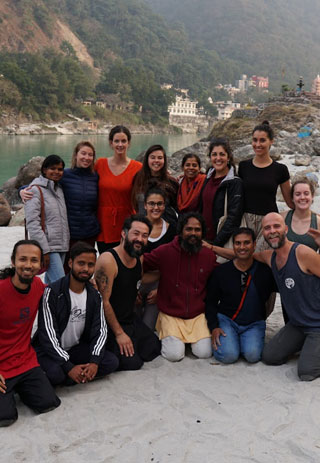
You need a good environment for your yoga practice. Siddhant School of yoga creates a family environment during your 500-hour Yoga TTC so that you can feel comfortable and focused on your yoga education.
During the 500-hour yoga TTC, we provide teachers who can motivate and support you, we have people who can care for your food and your rest, and we are presenting the best yoga education on a good campus along with a good environment for your growth.

Intense practice of yoga is something to practice 100% with proper technique along with the right understanding. The intense practice of yoga gives you growth, balance, and the experience of your true self.
Without personal attention and the right motivation, you cannot do intense practice.
During the 500-hour Yoga TTC, Siddhant School of Yoga motivates you to do intense practice by giving the right technique for your growth and balance.

The path of yoga is all about balancing your five bodies and they are the Physical body, Mental body, Pranic body, Understanding body, and Bliss body.
You are here for your growth through the right practice of yoga. And growth means simultaneous growth of these five bodies. You should have to develop your physical health, mental balance, energy balance, and understanding simultaneously to get a blissful, joyful, and happy life.
During the 500-hour Yoga TTC, Siddhant School of Yoga presents five body sciences to balance your five bodies.

Every letter and word has its energy field and effect. A Mantra can be a collection of one letter, a group of letters, or a group of words. Whenever you collect some energetic group of words they create a large amount of power that can be used creatively for your inner or outer growth. By Mantra chanting you can create or attract anything whatever you want because Mantra creates pure energy. You can find different Mantras for different purposes like Mantras for good health, for money, for meditation, and power, and so on. Proper pronunciation of Mantra is very necessary for a good result. During the 500-hour Yoga TTC Siddhant School of Yoga presents the right way of Mantra chanting with Proper pronunciation during your yoga courses.

Kundalini is not just energy. Kundalini itself is a source of knowledge and wisdom. A little amount of Kundalini has already awakened you for your normal living. By the right practice, when Kundalini starts awakening, it takes care of you like a mother in all dimensions of your life. So in India, we never say just Kundalini, we always say mother kundalini.
During the 300-hour Yoga TTC, Siddhant School of Yoga presents Kundalini Yoga sessions with some secret and classical kundalini meditation techniques to awaken your chakras and kundalini systematically.

500 hours Teacher Training Course is a professional yoga course. But yoga is not professional itself. Yoga is all about your inner growth. Siddhant School of Yoga as a professional Yoga Teacher Training School gives you the right training to become a professional yoga teacher. Along with that we also maintain the true form of yoga which is for your inner growth. That’s why Siddhant School of Yoga is more than a Yoga Teacher Training School.
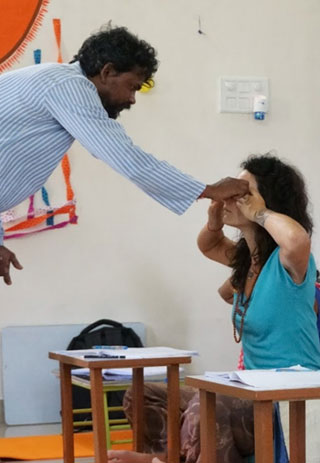
The Teaching Methodology is a very necessary part of the 500-hour Yoga Teacher Training Course. The right yoga practice makes you a good practitioner but the right teaching methodology makes you a good teacher.
The Teaching Methodology is all about the right teaching methods for the subjects that you have learned during the yoga course.
During the 500-hour Yoga TTC, Siddhant School of Yoga presents the right teaching methodology so that you can present yourself as a good and professional yoga teacher.

Teaching Practice is an important part of the Yoga Teacher Training Course. After getting the right teaching methodology you will go through the teaching practice to be a professional teacher.
Here at Siddhant School of Yoga during the 500-hour Yoga TTC, you will get a chance to present yourself as a Yoga Teacher to teach your group through the right teaching practice in the last part of your Yoga TTC. All your teachers will teach you how to teach your group during this course.
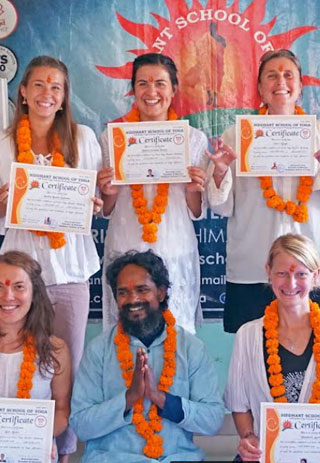
At the end of your professional 500-hour Yoga Teacher Training Course and after finishing your oral, practical, and written exams, you will get a certificate for your yoga course from Siddhant School of Yoga approved by Yoga Alliance, USA.
This 500-hour certified yoga course makes you eligible to be a professional registered yoga teacher (RYT-500) globally after registration with Yoga Alliance, USA.
500 Hour Yoga Teacher Training in Rishikesh
Upcoming Dates & Fees
| Course Date | Triple Sharing | Shared Room | Private Room | Apply Now |
|---|---|---|---|---|
| 03-01-2026 to 28-02-2026 | USD 1699 |
USD 1999 |
USD 2299 |
Booking Open |
| 03-03-2026 to 28-04-2026 | USD 1699 |
USD 1999 |
USD 2299 |
Booking Open |
| 03-05-2026 to 28-06-2026 | USD 1699 |
USD 1999 |
USD 2299 |
Booking Open |
| 03-07-2026 to 28-08-2026 | USD 1699 |
USD 1999 |
USD 2299 |
Booking Open |
🕉️ Ready to master your yoga teaching?
Take your yogic journey to the highest level with our 500-Hour Yoga Teacher Training Course in Rishikesh. This complete program is designed for dedicated practitioners and certified teachers who wish to integrate advanced asanas, in-depth yoga philosophy, classical pranayama, and meditation into their personal and professional life. Train under authentic Himalayan masters and become a truly transformative teacher.
Book Your Spot NowNot sure which date works best? Contact us and we’ll help you choose your ideal training month.
Facilities & Inclusions
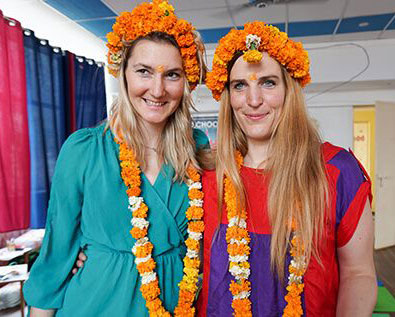 24 days Residential Yoga Course
24 days Residential Yoga Course
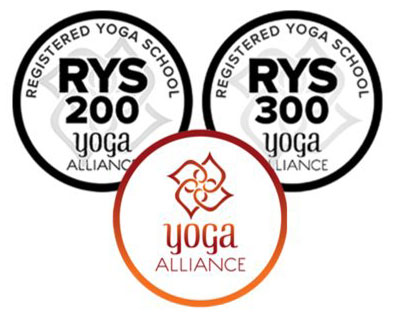 500 hour Yoga Alliance Certification
500 hour Yoga Alliance Certification
 Both Shared / Private Accommodation
Both Shared / Private Accommodation
 Attached Bathroom with Hot water
Attached Bathroom with Hot water
 Healthy and Nutritious Meals
Healthy and Nutritious Meals
 Three times Herbal Tea
Three times Herbal Tea
 Filtered Water
Filtered Water
 Free WiFi
Free WiFi
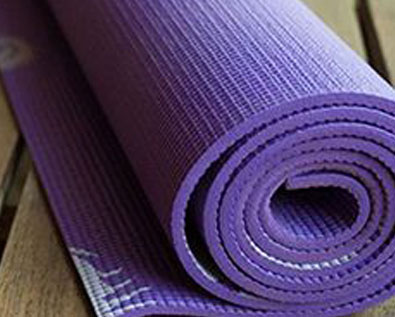 One Yoga Mat
One Yoga Mat
 One Neti Pot
One Neti Pot
 One Rubber Neti
One Rubber Neti
 One Rudraksha Mala
One Rudraksha Mala
 One Yoga Bag
One Yoga Bag
 Course Study Materials
Course Study Materials
 Note Books and Pens
Note Books and Pens
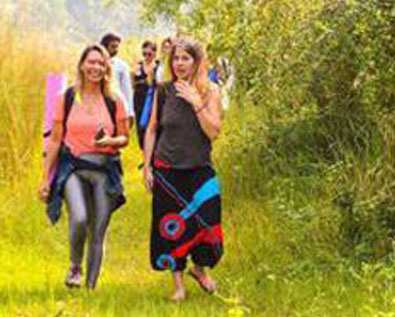 Short Excursion Trip
Short Excursion Trip
 Free Pikc Up from Dehardun Airport
Free Pikc Up from Dehardun Airport
 One Free Ayurvedic Massage
One Free Ayurvedic Massage
Code & Conducts
Read the rules and regulation carefully and obey them during the course
- Discipline is the important part of the training program so the course routine must be strictly followed.
- Please follow all the instructions of the teachers as they all are here to make you grow more.
- Do not leave the class without proper permission of teachers.
- Maintain integrity with other students.
- Do not indulge in alcohol or drugs.
- Smoking is strictly prohibited in the Yoga-School's premises.
- Maintain the safety and cleanliness of the place you will live in.
- Mobile phones, photography and videography are not allowed in the classroom.
- Avoid wearing clothes that expose the body, remember you are in India. Please respect the culture and wear accordingly.
- Always inform the management if you have been suffering from any decrease.
- Always turn off the lights, fans, power plugs, etc., when you are not using them.
- You must inform in advance if they are not taking a meal so that there is no wastage of food.
- For your safety and security, you must come to School before 10 pm at Night.
- Nobody will be allowed to take the meal or tea in the Yoga Hall or in your Room.
Daily Schedule
| Time | Activity |
|---|---|
| 05:30 AM | WAKE UP |
| 06:00 to 06:15 AM | HERBAL TEA AT DINNING HALL |
| 06:15 to 06:30 AM | DAILY YOGIC PURFICATION |
| 06:30 to 07:00 AM | DAILY TRATAK / DAILY OM CHANTING / DAILY GANESH AND GAYATRI MANTRA CHNATING / PRAYER AT YOGA HALL |
| 07:00 AM to 08:00 AM | PRANAYAMA / YOGIC PURIFICATION / BANDHA / MUDRA |
| 08:15 AM to 09:45 AM | HATHA YOGA / ALIGNMENT AND ADJUSTMENT |
| 09:45 AM to 10:30 AM | BREAKFAST AND KARMA YOGA |
| 10:30 AM to 11:30 AM | SPECIAL COURSE OF GRATITUDE FOR PEACE, HAPPINESS AND ALL POSITIVE RESULTS |
| 11:30 AM to 12:30 PM | MANTRA CHANTING / AYURVEDA |
| 01:00 NOON to 02:30 PM | LUNCH AND REST |
| 02:30 PM to 03:30 PM | ANATOMY AND PHISIOLOGY / YOGA NIDRA / RELAXATION |
| 03:30 PM to 04:30 PM | PHILOSOPHY WITH SIDDHANT TO DISCOVER YOGA / PATANJALI / CHAKRA / KUNDALINI / SAMADHI |
| 04:30 PM to 04:45 PM | TEA TIME AND SNACKS |
| 04:45 PM to 05:45 PM | MEDITATION / CHAKRA AND KUNDALINI YOGA |
| 05:45 PM to 07:15 PM | ASHTANGA VINYASA / ALIGNMENT AND ADJUSTMENT |
| 07:15 PM to 08:00 PM | DINNER |
| 10:00 PM - | LIGHTS OFF |
*NOTE: This is an overview sample of the daily schedule. The daily schedule provided may vary according to the practice of the practitioner.
500 Hour Yoga TTC Syllabus
200 hours Yoga Teacher Training Course Syllabus
- Prarambhik sthiti (base position) – beginner
- All classified as beginner due to gentle, preparatory nature.
- Padanguli naman (toes movement) – beginner
- Goolf naman (ankles movement) – beginner
- Goolf chakra (ankles movement) – beginner
- Goolf ghooran (ankles movement) – beginner
- Janu naman (knees movement) – beginner
- Janu chakra (knees movement) – beginner
- Mustika bandhana (fingers movement) – beginner
- Manibandha naman (wrists movement) – beginner
- Manibandha chakra (wrists movement) – beginner
- Kehuni naman (elbows movement) – beginner
- Kehuni chakra (elbows movement) – beginner
- Skandha chakra (shoulder rotation) – beginner
- Greeva sanchalana (neck movement) – beginner
- Rajju karshan asana (arm pulling) – beginner
- Chakki chalanasana (torso rotation) – beginner
- Nauka sanchalanasana (rowing – forward bend) – beginner
- Kashtha takshan asana (wood chopping – dynamic) – intermediate
- Gatyatmak meru vakrasana (spinal twist – dynamic) – intermediate
- Kauva chalasana (crawling – quadruped) – beginner
- Marjari asana (spine flexion/extension) – beginner
- Vyaghrasana (tiger pose – dynamic) – intermediate
- Surya namaskara (dynamic flow – solar) – intermediate
- Moon salutation (dynamic flow – lunar) – intermediate
- Sun salutation + variation (dynamic flow – modified) – intermediate
- Sun salutation + breathing (dynamic + breath) – intermediate
- Sun salutation + mantra (dynamic + sound) – intermediate
- Ardha titali asana (hip opener) – beginner
- Poorna titali asana (hip opener) – beginner
- Shroni chakra (hip rotation) – beginner
- Butterfly pose (hip opener) – beginner
- Hanumanasana (front split) – advanced
- Gaumukh asana (hip/shoulder opener) – intermediate
- Namaskarasana (forward squat) – beginner
- Vayu nishkasana (squatting forward bend) – beginner
- Paschimottanasana (seated forward bend) – intermediate
- Janu sirsasana (seated forward bend) – intermediate
- Kurmasana (introspective forward fold) – advanced
- Supta vajrasana (reclining backbend) – beginner
- Ardha ushtrasana (kneeling backbend) – beginner
- Ushtrasana (kneeling backbend) – intermediate
- Sarpasana (prone backbend) – intermediate
- Dhanurasana (bow pose) – intermediate
- Chakrasana (wheel pose) – advanced
- Setu bandhasana (supine backbend) – intermediate
- Supta udarkarshanasana (supine abdominal twist) – beginner
- Shava udarkarshanasana (supine spinal twist) – beginner
- Tiryak bhujangasana (prone twisting backbend) – intermediate
- Udarkarshanasana (twisting squat) – intermediate
- Garudasana (standing balance twist) – advanced
- Vrikshasana (standing balance) – beginner
- Garudasana (twist balance) – advanced
- Bakasana (arm balance forward) – advanced
- Sarvangasana (shoulder-stand) – intermediate
- Halasana (plow pose) – intermediate
- Sirsasana (head-stand) – advanced
- Vrischikasana (scorpion) – advanced
- Padotthanasana (leg raise) – beginner
- Padachakrasana (leg rotation) – beginner
- Pada sanchalanasana (cycling) – beginner
- Supta pawanmuktasana (knee-to-chest) – beginner
- Jhulan lurhakanasana (rocking – digestive) – beginner
- Naukasana (core strength) – intermediate
- Navasana (core strength) – intermediate
- Salabhasana (back strength – prone) – intermediate
- Mayurasana (arm/core balance) – advanced
- Trikonasana (lateral stretch) – beginner
- Bakasana (forward arm balance) – advanced
- Mayurasana (core arm balance) – advanced
- Vajrasana (meditative seat) – beginner
- Sukhasana (cross-leg seat) – beginner
- Ardha padmasana (half lotus pose) – intermediate
- Padmasana (full lotus) – advanced
- Siddhasana (yogic meditative seat) – intermediate
- What is ashtanga (a unique series of asana)
- The importance of ashtanga
- What is vinyasa: movement breathing system
- The importance of ashtanga vinyasa
- Access all areas
- The practice of ashtanga yogasana series
- Surya namaskar a
- Surya namaskar b
- Padangusthasana (big toe pose)
- Padahastasana (hands under feet)
- Trikonasana (triangle)
- Parivrittatrikonasana (revolved triangle)
- Parsvottonasana (side intense stretch)
- Virabhadrasana-i (warrior pose-i)
- Virabhadrasana-ii (warrior pose-ii)
- Utthitaparsvakonasana (extended side angle)
- Parivrittaparsvakonasana (revolved side angle)
- Prasaritapadottanasana (wide leg forward fold)
- Utthita hasta padangusthasana (extended hand to big toe)
- Ardhabaddha padma uttanasana (half bound lotus intense stretch)
- Utkatasana
- Dandasana (staff pose)
- Janu sirsasana (head to knee pose)
- Ardhabaddha padma paschimottanasana (half bound lotus version of paschimottanasana)
- Triangamukaikapada paschimottanasana (1 leg folded back, forward fold)
- Paschimottanasana (west intense stretch)
- Purvottasana (east intense stretch)
- Marichyasana
- Paripurnanavasana (boat)
- Bhujapidasana (arm pressure poses)
- Adhomukhavrksasana (handstand)
- Kurmasana (tortoise)
- Kukkutasana (rooster)
- Garbhapindasana (embryo in the womb)
- Baddhakonasana (bound angle)
- Upavistakonasana (wide-angle seated forward fold)
- Suptakonasana (reclining angle pose)
- Suptapadangustasana (reclining big toe pose)
- Ubhayapadangustasana (both big toes pose)
- Urdvhamukhapaschimottanasana (upward facing paschimo)
- Setubandhasana (bridge-building pose)
- Urdvhadhanurasana (upward bow)
- Paschimottanasana (intense stretch)
- Suptakurmasana (reclining tortoise)
- Savasana (corpse)
- Sirsasana (headstand)
- Balasana (child pose)
- Baddhapadmasana (bound lotus)
- Yogimudrasana (energetic lock or seal)
- Salambasarvangasana (shoulderstand)
- Halasana (plow)
- Karnapidasana (ear pressure)
- Urdvhapadmasana (upward lotus)
- Pindasana in sarvangasana (embryo)
- Matsyasana (fish pose)
- Uttanapadasana (intense stretched feet or legs)
- Padmasana (lotus pose)
- Tolasana (the uplifting - scales)
- Savasana (corpse pose)
- The importance of alignment and adjustment
- What is alignment?
- What is adjustment?
- Five kosha
- Seven chakras
- Nadis
- What is pranayama
- Aspects of pranayama
- The importance of pranayama
- The sequence of pranayama
- Preparation of pranayama
- Different types of pranayama and their precautions
- Introduction of yogic breathing
- Abdominal inhalation
- Thoracic inhalation
- Yogic inhalation
- Inner retention
- Outer retention
- Udgeeth pranayama
- Kapalbhati
- Surya bhedi pranayama
- Chandra bhedi pranayama
- Alternate breathing
- Bhastrika
- Bhamari pranayama
- Ujjayi pranayama
- Seetali
- Seetkari
- Introduction of nadi-sodhanam
- Rules and regulations of pranayama
- Teaching methodology
- Teaching practice
- What is bandha
- Importance of bandha
- Types of bandhas
- Introduction of mool bandha
- Introduction of udiyana bandha
- Introduction of jalandhara bandha
- Introduction of maha bandha
- What is mudra
- Implementation of mudra
- Types of mudras
- Jnana mudra
- Chin mudra
- Bhairav mudra
- Bhairavi mudra
- Nashikagra mudra
- Ashwani mudra
- Introduction of yogic purification (shatkarma)
- Importance of yogic purification
- Jalaneti
- Kapalbhati
- Trataka
- Kunjal kriya
- Sutra neti or rubber neti
- What is relaxation
- The importance of relaxation
- Muscular relaxation
- Deep breathing relaxation
- Tense relax method
- Partial body relaxation
- Full-body relaxation
- Mind relaxation
- What is meditation
- Understanding of meditation
- Understanding of meditation (path of yoga)
- Understanding of meditation (path of knowledge)
- Preparation of meditation
- Practice of meditation
- Practical aspects of meditation
- Om meditation
- Active meditation
- Candle tratak meditation
- Mirror tratak meditation
- Anapana meditation
- Vipassana meditation
- In-active meditation
- Dance meditation
- 5 senses meditation
- Spine awareness
- Spinal breathing meditation
- Introduction of chakra meditation
- Introduction of chakra balancing meditation
- Mudra meditation
- Teaching methodology of meditation
- What is yoga nidra
- The importance of yoga nidra
- Body awareness
- Finding sensation
- Finding blind spot
- Yoga nidra
- The importance of gratitude
- What is gratitude
- The right practice of gratitude
- What is mantra
- What is mantra chanting
- The importance of mantra chanting
- The different kinds of mantra
- Ganesh mantra
- Guru mantra
- Gayatri mantra
- Mahamrityunjaya mantra
- Universal prayer mantra
- Shanti mantra
- Joint movements (flexion, extension, abduction, adduction)
- Joint stabilization
- Joint stability and yoga
- Skeleton system
- Bones
- Types of joints
- Effect of asana on skeleton system
- Types of concentration on the skeleton system
- Major muscles
- Digestive system
- Respiratory system
- Nervous system
- What is philosophy?
- What is the problem
- What is growth
- Introduction of panch kosha
- Panch kosha and its balance
- What is mind?
- Overall about mind
- Balanced mind
- Introduction of Indian philosophy
- Yoga philosophy
- History of yoga
- Different types of yoga
- Raj yoga (patanjali yoga)
- All about patanjali yoga sutra
- Discipline and its importance in yoga
- What is yoga?
- Supportable of yoga
- Obstacles of yoga
- Ashtanga yoga by maharishi patanjali (8 limbs of yoga)
- 1-yama
- 2-niyama
- 3-asana
- 4-pranayama
- 5-pratyahara
- 6-dharana
- 7-dhyana
- Yoga and ethical teaching
- Relation between yoga and yoga alliance
- Relation between personal growth, professional growth, spiritual growth, and yoga
- Yoga ethics related to practice and teaching
- What is professional development?
- Yoga and professional development
- Encourage the trainee to seek RYT
- 200 hours yoga TTC & the profession of yoga (yoga business)
- Continuing the yoga education
- Marketing and promotion
- Support the students for their yoga business and yoga education
- Introduction of ayurveda
- What is ayurveda?
- Fundamentals of ayurveda
- Relation between ayurveda and yoga
- Relation between ayurveda and practical life
- Introduction to 3 dosha
- All about vatta dosha
- All about kapha dosha
- All about pitta dosha
- Body types, body constitution
- Disease and health definition
- Introductions of basic herbs
- What is teaching methodology?
- The importance of teaching methodology
- The fundamental qualities of teaching methodology
- Sequencing
- Pace
- Environment
- Cueing
- Class management
- Classroom preparation
- Classroom organization
- Positive and conscious communication
- Clear instruction
- The tone of the voice
- How much say!
- Be concise
- Offering props
- Passive and active demonstration
- Observation of individual student
- What is practicum
- The importance of the right teaching practice
- Teaching by students
- Support & feedback
- The process of registration
- All about RYT
- All about ERYT
- All about RYS
*Note: The entire syllabus provided over here may vary according to the practicing ability of the practitioner.
300 Hours Yoga Teacher Training Course Syllabus
- Definition of Hatha Yoga (Theoretical)
- Importance of Hatha Yoga (Theoretical)
- Hatha Yoga and Kundalini Asana (Theoretical)
- Joint Movement Series & Warm-up
- Joint Movement Series (Warm-up / Mobility)
- Eye Exercise (Sense Control / Warm-up)
- Beginner Asanas (Preparation for Intermediate and Advanced Kundalini Asana Practice)
- Tadasana (Mountain Pose) - Beginner
- Vrikshasana (Tree Pose) - Beginner
- Marjariasana (Cat-Cow Pose) - Beginner
- Bhujangasana (Cobra Pose) - Beginner
- Setu Bandhasana (Bridge Pose) - Beginner
- Balasana (Child’s Pose) - Beginner
- Sukhasana (Easy Pose) - Beginner
- Ardha Uttanasana - Beginner
- Baddha Konasana - Beginner
- Pawanmuktasana (Wind Release) - Beginner
- Ardha Chandrasana - Intermediate
- Parivrtta Trikonasana - Intermediate
- Virabhadrasana III - Intermediate
- Utkata Konasana - Intermediate
- Parivrtta Ardha Chandrasana - Advanced
- Skandasana - Intermediate
- Ardha Baddha Padma Paschimottanasana - Intermediate
- Triang Mukhaikapada Paschimottanasana - Intermediate
- Kurmasana - Advanced
- Hanumanasana - Advanced
- Agnistambhasana - Intermediate
- Krounchasana - Advanced
- Bharadvajasana II - Intermediate
- Ardha Matsyendrasana - Intermediate
- Parivrtta Janu Sirsasana - Intermediate
- Marichyasana III - Advanced
- Lolasana - Advanced
- Tittibhasana - Advanced
- Bakasana - Intermediate
- Eka Pada Koundinyasana - Advanced
- Astavakrasana - Advanced
- Mayurasana - Advanced
- Ustrasana - Intermediate
- Kapotasana - Advanced
- Eka Pada Rajakapotasana I - Advanced
- Dhanurasana - Intermediate
- Urdhva Dhanurasana - Advanced
- Viparita Dandasana - Advanced
- Sirsasana - Intermediate
- Pincha Mayurasana - Advanced
- Adho Mukha Vrksasana - Advanced
- Viparita Karani - Intermediate
- Eka Pada Sirsasana - Advanced
- Karnapidasana - Intermediate
- Vasisthasana - Intermediate
- Utthita Hasta Padangusthasana - Intermediate
- Ardha Baddha Padmottanasana - Intermediate
- Garudasana - Intermediate
- Natarajasana - Advanced
- Padmasana - Intermediate
- Baddha Padmasana - Advanced
- Yoga Mudrasana (in Padmasana) - Intermediate
- Siddhasana - Intermediate
- Muktasana - Intermediate
- Bhujapidasana - Advanced
- Yoganidrasana - Advanced
- Supta Kurmasana - Advanced
- Kasyapasana - Advanced
- Gandha Bherundasana - Advanced
- Chakorasana (or Purna Chakrasana) - Advanced
- Sun Salutation A
- Sun Salutation B
- Utthita Trikonasana - Triangle Pose
- Utthita Parvakonasana - Extended Side Angle Pose
- Parivrtta Trikonasana - Revolved Triangle
- Parivritta Parsvakonasana – Revolved Side Angle Pose
- Padangusthasana - Big Toe Posture
- Utthita Hasta Padangusthasana - Hand to Big Toe Posture
- Padahastasana – Hands Under Feet Posture
- Prasarita Padottanasana A to D – Intense Wide Leg Stretch
- Ardha Baddha Padmottanasana - Half-Bound Lotus Forward Bend
- Urdhva Mukha Paschimottanasana - Upward Facing Full Forward Bend
- Purvottanasana – Intense East Stretch
- Paschimottanasana – Full Forward Bend
- Navasana – Boat Posture
- Bhujapidasana - Shoulder Pressure Posture
- Garbha Pindasana - Embryo Posture
- Kurmasana - Tortoise Posture
- Supta Kurmasana - Sleeping Tortoise
- Baddha Konasana A to B – Bound Angle Posture
- Supta Konasana A to B – Lying Down Angle Posture
- Upavista Konasana A to B - Seated Angle Posture
- Marichyasana A, B, C
- Kukkutasana – Rooster Posture
- Setu Bandhasana - Bridge
- Urdhva Dhanurasana - Upward Bow Posture
- Sarvangasana – Shoulder-Stand
- Urdhva Padmasana – Upward Lotus
- Karnapidasana – Ear Pressure Posture
- Halasana – Plow
- Matsyasana – Fish Posture
- Supta Padangustasana – Reclining Big Toe Posture
- Ubhaya Padangusthasana - Both Big Toes Postures
- Uttana Padasana - Extended Leg Posture
- Sirsasana – Headstand
- Padmasana – Lotus
- Yoga Mudra - Sealed Yoga Posture
- Balasana – Relaxation Pose
- The Importance of Alignment and Adjustment
- What is Alignment?
- What is Adjustment?
- Five Kosha
- Seven Chakras
- Nadis
- What is Pranayama
- Aspects of Pranayama
- The Importance of Pranayama
- The Sequence of Pranayama
- Preparation of Pranayama
- Different Types of Pranayama and Their Precautions
- Introduction of Yogic Breathing
- Right Practice of Yogic Inhalation
- Right Practice of Yogic Exhalation
- Right Practice of Yogic Breathing
- Inner Retention
- Outer Retention
- Udgeeth Pranayama
- Right Practice of Kapalbhati with Lock
- Surya Bhedi Pranayama
- Chandra Bhedi Pranayama
- Alternate Breathing
- Bhastrika
- Bhramari Pranayama
- Ujjayi Pranayama
- Sheetali
- Sheetkari
- The Right Practice of Nadi-Shodhanam
- Rules and Regulations of Pranayama
- Teaching Methodology
- Teaching Practice
- What is Bandha
- Importance of Bandha
- Types of Bandhas
- Right Practice of Mool Bandha
- Right Practice of Udiyana Bandha
- Right Practice of Jalandhara Bandha
- Right Practice of Maha Bandha
- Mudras can be categorized into five different groups:
- Hand Mudra
- Head Mudra
- Postural Mudra
- Lock Mudra
- Perineal Mudra
- What is Mudra
- Implementation of Mudra in Mantra Chanting and Meditation
- Types of Mudras
- Hand Mudra:
- Jnana Mudra
- Chin Mudra
- Bhairava Mudra
- Bhairavi Mudra
- Head Mudra:
- Nasikagra Mudra
- Shambhavi Mudra
- Kaki Mudra
- Boochari Mudra
- Akashi Mudra
- Postural Mudra:
- Yoga Mudra
- Viparati Karani Mudra
- Prana Mudra
- Lock Mudra:
- Maha Mudra
- Mahavheda Mudra
- Perineal Mudra:
- Ashwini Mudra
- Introduction to Yogic Purification (Shatkarma)
- Importance of Yogic Purification
- Precautions of Yogic Purification
- Jalaneti
- Kapalbhati
- Trataka
- Kunjal Kriya
- Sutra Neti or Rubber Neti
- Agnisaara Kriya
- What is Relaxation
- The Importance of Relaxation
- Muscular Relaxation
- Deep Breathing Relaxation
- Tense Relax Method
- Partial Body Relaxation
- Full-Body Relaxation
- Mind Relaxation
- What is Meditation
- Understanding of Meditation
- Understanding of Meditation (Path of Yoga)
- Understanding of Meditation (Path of Knowledge)
- Preparation of Meditation
- Practice of Meditation
- Practical Aspects of Meditation
- Om Meditation
- Active Meditation
- Candle Tratak Meditation
- Mirror Tratak Meditation
- Anapana Meditation
- Vipassana Meditation
- In-active Meditation
- Dance Meditation
- 5 Senses Meditation
- Spine Awareness
- Spinal Breathing Meditation
- Introduction of Chakra Meditation
- Introduction of Chakra Balancing Meditation
- Chakra Meditation
- Kundalini Meditation
- Mudra Meditation
- Teaching Methodology of Meditation
- What is Yoga Nidra
- The Importance of Yoga Nidra
- Body Awareness
- Finding Sensation
- Finding Blind Spot
- Yoga Nidra
- The Importance of Gratitude
- What is Gratitude
- The Right Practice of Gratitude
- What is Mantra
- What is Mantra Chanting
- The Importance of Mantra Chanting
- Ganesha Mantra
- Guru Mantra
- Gayatri Mantra
- Maha-Mantra
- Maha Mrityunjay Mantra
- Universal Prayer Mantra
- Shanti Mantra
- Joint Movements (Flexion, Extension, Abduction, Adduction)
- Joint Stabilization
- Joint Stability and Yoga
- Skeleton System
- Bones
- Types of Joints
- Major Muscles
- Effect of Asana on Skeleton System
- Types of Concentration on the Skeleton System
- Cardiovascular System
- Endocrine System
- Digestive System
- Respiratory System
- Nervous System
- What is Philosophy?
- What is Growth?
- What is a Problem?
- What is a Complaint?
- Introduction of Panch Kosha
- What is Mind?
- The Nature of the Mind
- Working Area of the Mind
- Goal and Mind
- Importance of Goal
- How to Set a Goal
- Gratefulness and Mind
- The Importance of Gratefulness
- Symptoms of the Balanced Mind
- Introduction of Indian Philosophy
- Different Types of Yoga
- Introduction of Raja Yoga (Patanjali Yoga)
- What is Yoga?
- Discipline and its Importance in Yoga
- Experience of Thoughtlessness
- What is Samadhi?
- Supportable of Yoga
- Obstacles of Yoga
- Surrender
- Concept of God
- Introduction of Ashtanga Yoga of Patanjali
- Introduction of the Five Kleshas
- Ignorance
- Ego
- Attachment
- Aversion
- Fear
- Right Understanding of Kundalini Yoga
- Yoga and Ethical Teaching
- Relation Between Yoga and Yoga Alliance
- Relation Between Personal Growth, Professional Growth, and Spiritual Growth in Yoga
- Yoga Ethics Related to Practice and Teaching
- What is Professional Development?
- Yoga and Professional Development
- Encourage the Trainee to Seek RYT
- 300 Hours Yoga TTC & the Profession of Yoga (Yoga Business)
- Continuing Yoga Education
- Marketing and Promotion
- Support the Students for Their Yoga Business and Yoga Education
- Introduction to Ayurveda
- What is Ayurveda?
- Fundamentals of Ayurveda
- Relation Between Ayurveda and Yoga
- Relation Between Ayurveda and Practical Life
- Introduction to 3 Doshas
- All about Vatta Dosha
- All about Kapha Dosha
- All about Pitta Dosha
- Body Types, Body Constitution
- Disease and Health Definition
- Introductions of Basic Herbs
- What is Teaching Methodology?
- The Importance of Teaching Methodology
- The Fundamental Qualities of Teaching Methodology
- Sequencing
- Pace
- Environment
- Cueing
- Class Management
- Classroom Preparation
- Classroom Organization
- Positive and Conscious Communication
- Clear Instruction
- The Tone of the Voice
- How Much to Say!
- Be Concise
- Offering Props
- Passive and Active Demonstration
- Observation of Individual Student
- What is Practicum
- The Importance of the Right Teaching Practice
- Teaching by Students
- Support & Feedback
- The Process of Registration
- All About RYT
- All About ERYT
- All About RYS
*Note: The entire syllabus provided over here may vary according to practice of the practitioner.
Food & Accommodation
Food
Eating can also be considered proper nutrition in which you seek universal balance. You have to develop mindful eating practice can provide a ground that truly supports your personality & Yoga practice.
Three-time (Breakfast, Lunch & Dinner) meals per day.
All Meals are a vegetarian, nutritious, healthy and balanced diet.
A nourishing diet with fruits, vegetables, Indian herbs are added to the meal plan on an everyday basis.
Two times Tea during the course.


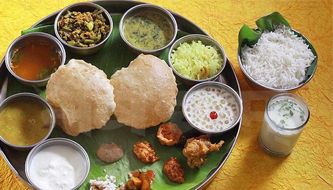
Accommodation
We offer Single Private and shared rooms.
The rooms have the facilities to suit the western lifestyle and we strive to make improvements according to comfortable staying.
Each room is arranged with a study table, chair, Double bed, and a storage closet to store your belongings.
We provide fresh pillow covers and bedsheet once a week.
Every room equipped with a nicely made washroom with all facilities like Toilet paper, Disposable bin, western toilet, washbasin to suit the western lifestyle.
The washroom are facilities with 24 hours hot & normal water.

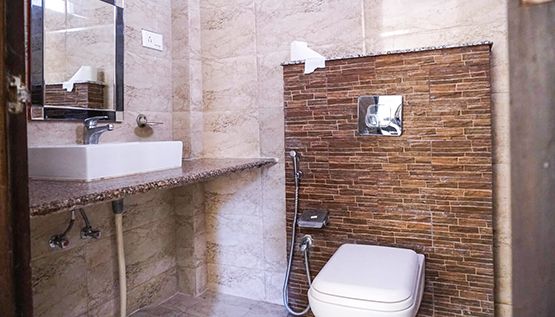
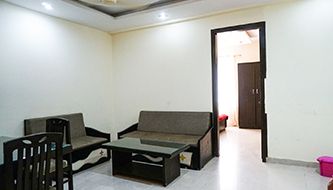
Our Yoga Course Benefits
- Learn Hatha-Yoga to deal with your mind and energy.
- Work with your Chakra through Hatha-Yoga.
- Practice more Nadi-Sodhana Pranayama, the only Pranayama in Indian traditional yogic system.
- Learn Pranayama for the Kundalini awakening.
- Get Pranayam sequence and schedule for your self-practice.
- Get proper knowledge about yogic gesture (mudra) and its practical use during yoga practice.
- Learn more Yoga Mudras from traditional yogic scriptures.
- Get personal attention to learn and practice yogic locks (Bandhas).
- Dissolve your knots, if you have by practicing different Yogic Locks and Pranayama.
- Learn the right techniques to develop a meditation technique yourself.
- Understand the meditation as a happening not as a practice.
- Learn the art of relaxation.
- Know the right technique to instant relax.
- Get the right techniques to designer short Yog -nidra methods for practical use.
- Arrange your subconscious mind by Yoga-nidra.
- Protect All negativities by Mantra Chanting.
- Discover the source of Intelligence
Frequently Asked Questions
Siddhant School of Yoga, one of authentic and result oriented yoga school in Rishikesh, India. We are providing high-quality yoga education and curriculum following the standards of Yoga Alliance USA.
Our 200-hour and 300-hour Yoga Teacher Training Course are certified by Yoga Alliance USA. We are providing a 500-hour Yoga TTC as it is a combination of 500 hours and 300 hours Yoga Program. After certification from Siddhant School of Yoga, you will be eligible to teach throughout the world as a Yoga teacher.
Note: After certification, you need to register yourself at Yoga Alliance to become an officially Registered Yoga Teacher (RYT)according to Yoga Alliance USA. The Yoga Alliance will charge almost $115 as the registration fees to register yourself as a yoga teacher. For your kind information more than 70000 Registered Yoga Teacher (RYT) and more than 30000 Registered Yoga Schools (RYS) you can find in Yoga Alliance family. So come be a part of a big and beautiful family of Yoga. For more information please visit www.yogaalliance.com.
The 'Right Attitude' is the only eligibility criteria to participate in a yoga course. If you have the right attitude, definitely you can join a yoga course and get the benefit for your growth. Besides this basic eligibility, you need to have some more practical eligibility to attend any kind of yoga program at Siddhant School of Yoga.
- 1- The applicant should be in a good physical condition.
- 2- Need to be open-mind and eagerness to understand and practice Yoga.
- 3- Dedication to practice 9 to10 hours daily with 100% attendance.
- 4- You must be a vegetarian during the yoga course.
- 5- Alcohol, drugs, and smoking are must not be allowed during the yoga course.
- 6- Need to know basic English.
- 7- Age group in-between 18 to 60 years.
- 8- Must not have any surgery for last one year.
- 9- Not allowed with any kids.
All these basic points are the eligibility criteria of yoga courses provided by Siddhant School of Yoga is really help you to understand and practice Yoga for your growth and success. Please go through all these points carefully before join a yoga course.
1. Two (2) color photocopy of your Passport are required, it should be very clear. Please be aware, you need to show the original Passport to us.
2. Two (2) color passport size photo is required, it should be very clear.
We need to know your Visa expiry date, as you got before arrival.
Let you remind that you are required an Indian Tourist Visa before traveling to India.
To arrival in India, you as a foreigner need a Visa. Give yourself some amount of time to arrange an Indian Tourist Visa from the Indian embassy or through the Visa services company before leaving your country and traveling to India. Please arrange your health and travel insurance and other important requirements like bank and credit card issues before leaving your home town and country.
You are most welcome to Siddhant School of Yoga. You can come to stay before one day, the starting date of the yoga course. Upon your arrival in our yoga school, you will provide your room to take rest and fresh. After some rest please come to the office and fill-up your course application form and deposit the rest of your course fees. Then you will get the current day and next day schedule and we will show all the areas, you are going to use throughout the yoga program, like Yoga Hall, Dining, etc.
On the starting day of the yoga course, you will provide a Hatha-Yoga class in the morning at 8:00 am to 9:00 am then you will have your breakfast. At 10:30 a.m. our fire-ceremony program, the traditional way to start any program in India. After that, we will take a group photo for your good memory and for official use and just after that, you will get your study-materials for your yoga TTC and then Lunch and rest.
At 3:00 pm, the starting day of the yoga course, we are conducting an orientation class to let you know all about the yoga course. Such as About teachers, syllabus, rule and regulations, food, accommodation, benefits, the right way to go through the Yoga course and many other things looking to the success of this Yoga Course.
In this orientation meeting, the students meet each other and get introduced the teachers to our new students. Here you will be asked about your expectations and goals so that we can help you accordingly during the yoga course. You can ask anything, whatever you want more or want to know about more in this Yoga Course, definitely, we will try our best to cooperate and provide to you. In this orientation session, you will get the 1st-week yoga course schedule and then after, the Yoga course starts officially along with the Ashtanga Yoga class in the evening.
You are most welcome to our school. We are providing everything to you related to Yoga education, food, and accommodation. We are here to help and serve you as a friend and family but it will be better to bring some useful things to help you and will be comfortable and convenient for you during yoga course.
You can bring your tablets, cameras, laptops and any other electronics products you are using for your easy and growing life. You should bring 2(two) passport size photographs for our record and certificate, mobile phone, cords of the electronic devices, ATM Debit Card (for the best exchange rate) clothes suits the seasons, comfortable clothes for practicing yoga, shoes, travel towel, first aid kit and basic medications and any personal belongings item. You may bring the musical instrument, mp3 player or anything else that you thinks is necessary. Please do not brings those things which are not useful and necessary during the travel or Yoga course, such as expensive jewelry and ornaments. If you bring, please be aware of your things and keep them safe. We are not responsible if any theft happens over here. However, Siddhant School of Yoga gives priority to your safety.
Course Registration
As you express you’re willing about doing yoga and ready to do
- First Send your inquiry to us.
- Our team send you a presentation of our yoga course as soon as we get your inquiry.
- Submit your Rregistration form below and pay $500 as registration fee which is non-refundable.
- Then finally we send you a confirmation email to you about confirm your booking.
Click the button below for quick registration.
If you have any query then feel free to contact us anytime. We are always there to assist you!
Course Fee: Shared Room : USD 2699 Private Room : USD 2999
Registration Fee: 400 USD
Refund Policy
All the students are advised to read the policy carefully before forwarding the application and the payment for the yoga teacher training course.
- The advance deposited for the course is non-refundable.
- In case of Emergency and unavoidable situation, students can postpone the course and go for any other month’s scheduled course within the current year. Students must inform us by the email with proper reason to postpone the course.
- If students cancel the course, we accept the cancelation but the advanced amount is non-refundable. There are no charges for cancellation but students have to inform us about the cancellation by email.
What's Our Students Say

Video Review


Understand your true indentity
This point is specially mentioned for a seeking attitude yoga practitioner. Actually, yoga is meant for you to find...

Measure your growth Step by Step
Learning and practicing yoga exactly one of the best steps towards a great life but are you aware of your practice weather is it on...

Result Oriented Yoga School
Siddhant School of Yoga Is a result oriented Yoga School in Rishikesh India. We are presenting YOGA as a science, if you practice ...

